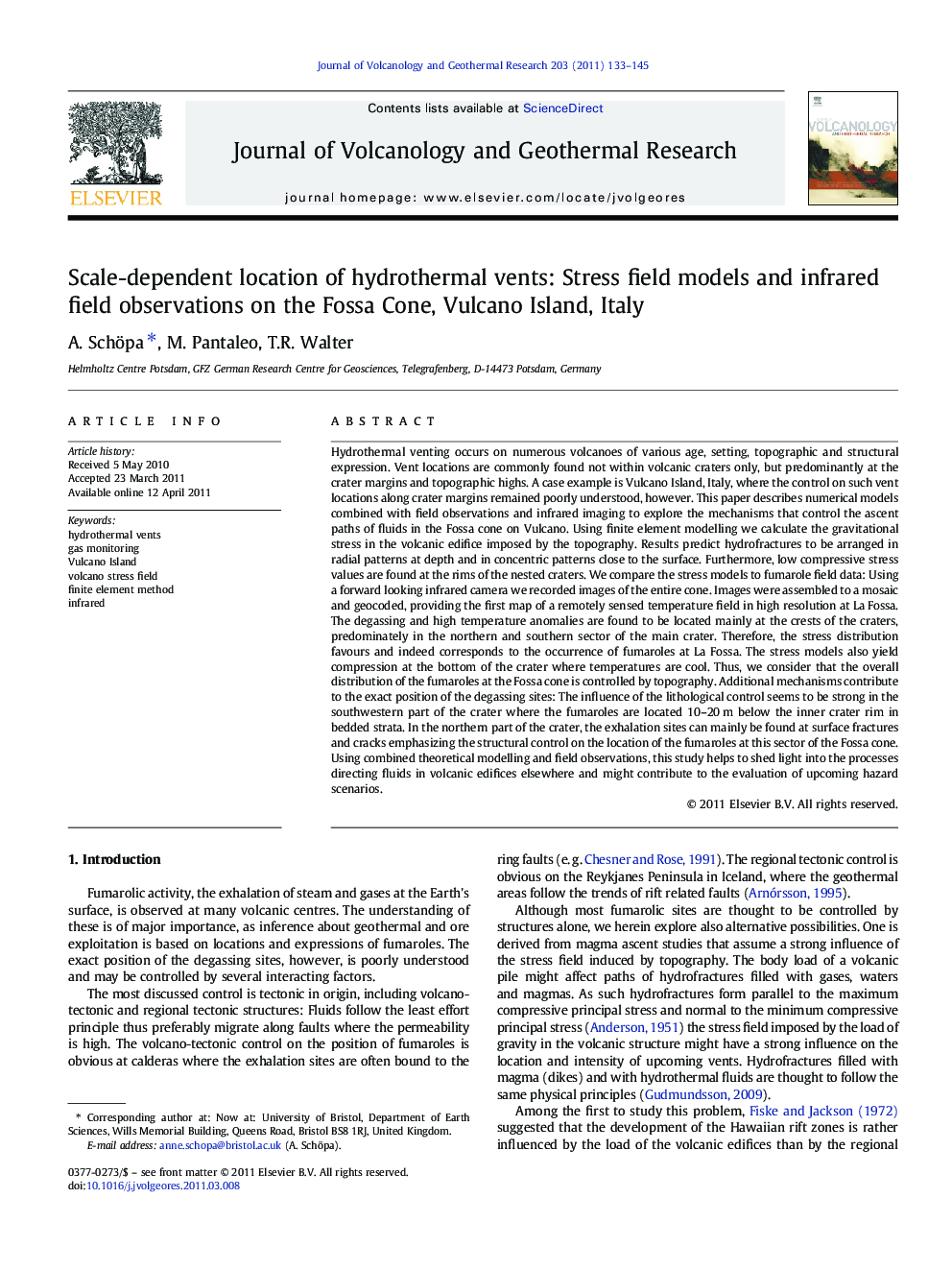| Article ID | Journal | Published Year | Pages | File Type |
|---|---|---|---|---|
| 4713600 | Journal of Volcanology and Geothermal Research | 2011 | 13 Pages |
Hydrothermal venting occurs on numerous volcanoes of various age, setting, topographic and structural expression. Vent locations are commonly found not within volcanic craters only, but predominantly at the crater margins and topographic highs. A case example is Vulcano Island, Italy, where the control on such vent locations along crater margins remained poorly understood, however. This paper describes numerical models combined with field observations and infrared imaging to explore the mechanisms that control the ascent paths of fluids in the Fossa cone on Vulcano. Using finite element modelling we calculate the gravitational stress in the volcanic edifice imposed by the topography. Results predict hydrofractures to be arranged in radial patterns at depth and in concentric patterns close to the surface. Furthermore, low compressive stress values are found at the rims of the nested craters. We compare the stress models to fumarole field data: Using a forward looking infrared camera we recorded images of the entire cone. Images were assembled to a mosaic and geocoded, providing the first map of a remotely sensed temperature field in high resolution at La Fossa. The degassing and high temperature anomalies are found to be located mainly at the crests of the craters, predominately in the northern and southern sector of the main crater. Therefore, the stress distribution favours and indeed corresponds to the occurrence of fumaroles at La Fossa. The stress models also yield compression at the bottom of the crater where temperatures are cool. Thus, we consider that the overall distribution of the fumaroles at the Fossa cone is controlled by topography. Additional mechanisms contribute to the exact position of the degassing sites: The influence of the lithological control seems to be strong in the southwestern part of the crater where the fumaroles are located 10–20 m below the inner crater rim in bedded strata. In the northern part of the crater, the exhalation sites can mainly be found at surface fractures and cracks emphasizing the structural control on the location of the fumaroles at this sector of the Fossa cone. Using combined theoretical modelling and field observations, this study helps to shed light into the processes directing fluids in volcanic edifices elsewhere and might contribute to the evaluation of upcoming hazard scenarios.
Research highlights► Stress field models and infrared field observations were used to investigate sites of hot temperature fumaroles at the Fossa Cone, Vulcano Island, Italy. ► The combined effects of topography, lithology and faulting determine the location of hydrothermal vents. ► The large scale distribution of fumaroles is controlled by topographic body forces. ► Local expressions of fumaroles are controlled by lithology and fractures.
